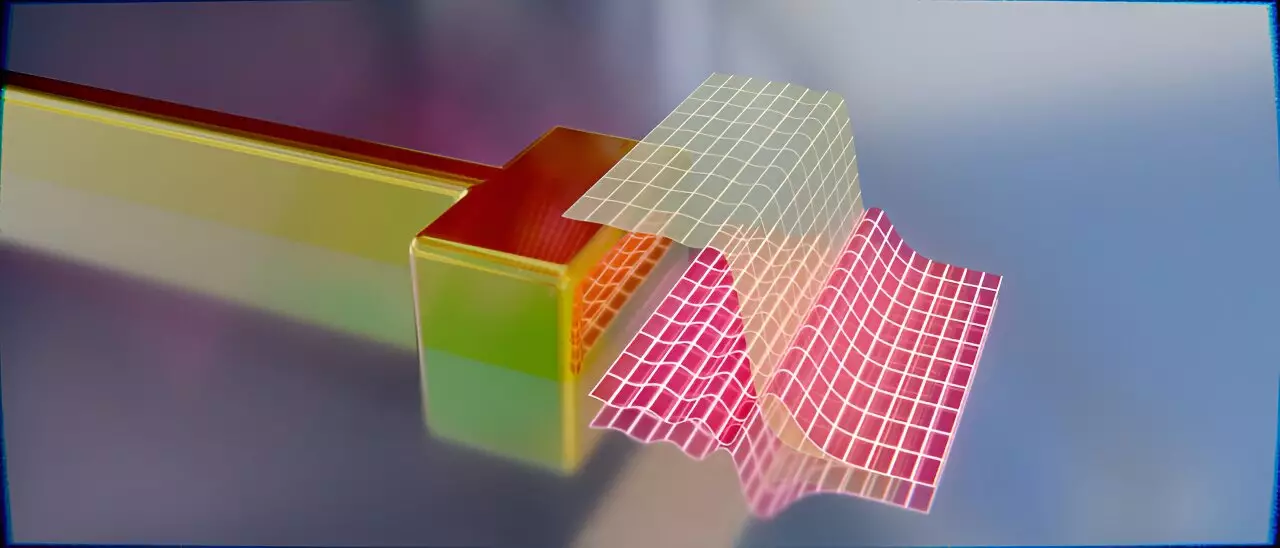As we continue advancing into the digital age, the limitations imposed by conventional computing technology become increasingly apparent. Current semiconductor materials, which underpin the majority of computer systems, operate efficiently only up to a few gigahertz frequencies. This translates to the capacity for several billion operations per second, a remarkable feat in the context of previous decades. Yet, as applications demand greater processing capabilities, reliance on multi-chip systems to distribute computing tasks has become necessary. While this approach has yielded improvements in performance, it simultaneously highlights an inherent limitation: further acceleration of individual chips has become virtually impossible. The exploration of alternative methods to enhance computational speed is not merely an academic interest; it is becoming a critical requirement for future technological growth.
The Promise of Light in Computing
The potential introduction of light as a conduit for computational processes presents a paradigm shift with transformative implications. By harnessing photons instead of electrons, researchers postulate that computer chips could achieve speeds up to 1,000 times faster. A pivotal aspect of this innovation lies in plasmonic resonators, nanometer-sized metallic structures designed to manipulate light and electron interactions. This innovative approach may hold the key to overcoming current limitations imposed by electronic components. However, despite their formidable potential, the ability to modulate plasmonic resonators effectively remains a challenge. Current methods lack the functionality and precision that transistors provide in traditional electronics, posing significant hurdles for the deployment of rapid light-based switching mechanisms.
Breakthroughs in Modulation: JMU and SDU Collaboration
A recent breakthrough from a research team from Julius-Maximilians-University (JMU) Würzburg in Bavaria, in collaboration with Southern Denmark University (SDU), showcases progressive strides in the modulation of light antennas. Their experiments, published in the esteemed journal *Science Advances*, reveal significant advancements in electrically controlled modulation. This research focuses on altering the surface properties of resonators rather than modifying their entire structure, a strategic approach that unlocks new possibilities for high-speed plasmonic applications. By achieving electrical contact with a nanorod constructed from gold, the team has brought to the forefront a concept that was theoretically simple but practically elusive.
The success of this venture can be attributed to innovative nanofabrication techniques employing helium ion beams and gold nanocrystals. Such sophisticated methods have facilitated the precise manipulation of nanoscale structures, allowing for detailed experimentation with minimally invasive designs. Additionally, advanced measurement techniques utilizing lock-in amplifiers have proven essential in uncovering subtle physical phenomena that impact the resonator’s surface behavior. Remarkably, the findings highlight quantum effects that stretch beyond established classical descriptions, challenging our understanding of interaction dynamics at the nanoscale.
One of the fascinating aspects emerging from the study is the shift in perception regarding electron behavior at the boundary between metal and air. Traditionally viewed through a classical lens—akin to how water behaves at a harbor wall—recent measurements reveal a role for electrons that is more fluid and less rigid. Instead of abruptly ceasing at the nanoparticle edge, electrons display a “smeared” transition into the surrounding air, akin to water merging seamlessly with a sandy beach. This discovery has prompted scholars at SDU to devise a semi-classical model capable of reconciling quantum properties with classical methodologies. This integrated approach not only reproduces experimental outcomes but also opens avenues for systematically understanding and manipulating the quantum effects underlying surface electron behavior.
Future Implications and Applications
The implications of this research extend beyond theoretical curiosity; the advancements made could revolutionize technology and engineering. The prospect of developing smaller, more efficient optical modulators based on new antenna designs could lead to exceptional improvements in data processing capabilities. Moreover, understanding the influence of surface electrons could usher in new insights into catalytic processes, informing innovations in energy conversion and storage technologies. This research underscores a pivotal moment in technology—the possibility of transcending current limitations to pave the way for a new era of photonic computing.
Through these pioneering efforts, the future of computing could truly be redefined, not merely enhancing speed but fundamentally altering how we conceive of computational processes. As researchers continue to probe the depths of quantum mechanics, the exhilarating possibilities that lie ahead stimulate both inspired inquiry and practical applications across numerous fields.


Leave a Reply